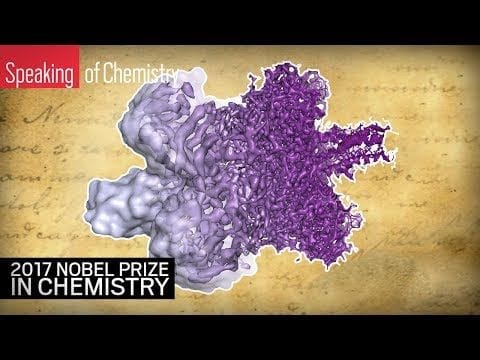Jacques Dubochet, Joachim Frank, and Richard Henderson are the winners of the Nobel Prize in Chemistry 2017. The trio won equal shares of the more than $1.1 million prize for their work developing cryo-electron microscopy (cryo-EM) for the study of biomolecules. Electron microscopes were once thought to be useless for studying biological substances since the […]

Jacques Dubochet, Joachim Frank, and Richard Henderson are the winners of the Nobel Prize in Chemistry 2017. The trio won equal shares of the more than $1.1 million prize for their work developing cryo-electron microscopy (cryo-EM) for the study of biomolecules.
Electron microscopes were once thought to be useless for studying biological substances since the beams they emit can damage tissue. But these three researchers developed new techniques that made it possible to use electron microscopes to study biomolecules that cannot be imaged using other methods.
Dubochet developed a process for using rapidly frozen water to protect a sample from the electron beam while helping the molecule hold its shape in a vacuum by preventing dehydration. Frank created a method for combining multiple 2-D images into a single high-resolution 3-D structure. Henderson created the first 3-D image of the protein bacteriorhodopsin at atomic resolution using an electron microscope. He accomplished this by using the protein’s regular structure to compensate for technical limitations of electron microscopes at the time. This development proved that electron microscopes could produce images that rivaled x-ray crystallography for clarity.
Together, these breakthroughs helped demonstrate that cryo-EM could be used to study a variety of biomolecules, including structures too large to be imaged using other methods. In recent years, advancements in electron microscopes made it possible to create three-dimensional structures of biomolecules at much higher resolutions. These images help scientists study critical biological processes, such as how ribosomes turn genetic information into proteins, as well as aiding in developing drugs to fight diseases, such as the Zika virus.
Jacques Dubochet is an Honorary Professor of biophysics at the Université de Lausanne after retiring in 2007. Joachim Frank is a Professor of Biochemistry and Molecular Biophysics and Biological Sciences at Columbia University, and Distinguished Professor of the State University of New York at Albany. Richard Henderson is the Programme Leader of the MRC Laboratory of Molecular Biology at Cambridge.
In honor of their achievement, ACS is pleased to make the following papers from the winners of the Nobel Prize in Chemistry 2017 open access until Nov. 4, 2017.
***
Purple membrane: color, crystallinity, and the effect of dimethyl sulfoxide
Pande, R. Callender, R. Henderson, and A. Pande
Biochemistry, 1989, 28 (14), pp 5971–5978
DOI: 10.1021/bi00440a038
***
Localization of lipoyl-bearing domains in the .alpha.-ketoglutarate dehydrogenase multienzyme complex
Terence Wagenknecht and Joachim Frank
Biochemistry, 1984, 23 (15), pp 3383–3389
DOI: 10.1021/bi00310a001
***
Quantitative Characterization of Domain Motions in Molecular Machines
Suvrajit Maji, Rezvan Shahoei, Klaus Schulten, and Joachim Frank
Phys. Chem. B, 2017, 121 (15), pp 3747–3756
DOI: 10.1021/acs.jpcb.6b10732
***
Architecture of Limulus polyphemus hemocyanin
Jean Lamy, Pierre Yves Sizaret, Joachim Frank, Andriana Verschoor, Richard Feldmann, and Joseph Bonaventura
Biochemistry, 1982, 21 (26), pp 6825–6833
DOI: 10.1021/bi00269a031
***
Quantitative Connection between Ensemble Thermodynamics and Single-Molecule Kinetics: A Case Study Using Cryogenic Electron Microscopy and Single-Molecule Fluorescence Resonance Energy Transfer Investigations of the Ribosome
Colin D. Kinz-Thompson, Ajeet K. Sharma, Joachim Frank, Ruben L. Gonzalez, and Debashish Chowdhury
Phys. Chem. B, 2015, 119 (34), pp 10888–10901
DOI: 10.1021/jp5128805
***
Approach to the direct intramolecular localization of antigenic determinants in Androctonus australis hemocyanin with monoclonal antibodies by molecular immunoelectron microscopy
Jean Lamy, Josette Lamy, Philippe Billiald, Pierre Yves Sizaret, Guy Cave, Joachim Frank, Genevieve Motta
Biochemistry, 1985, 24 (20), pp 5532–5542
DOI: 10.1021/bi00341a038
***

